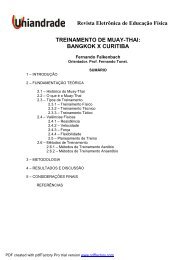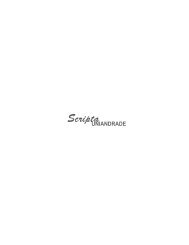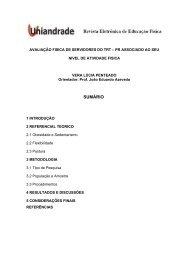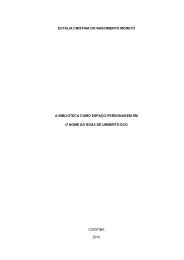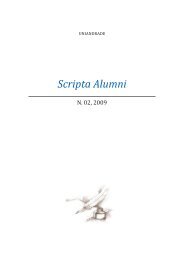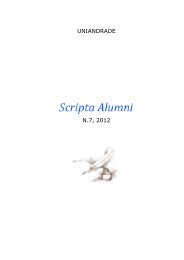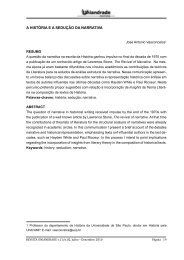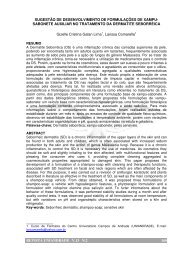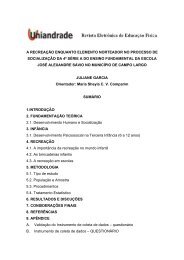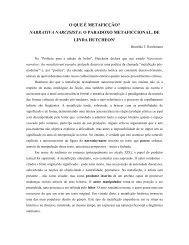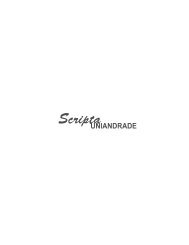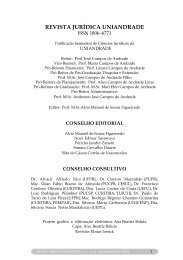Scripta 9_2_link_final.pdf - Uniandrade
Scripta 9_2_link_final.pdf - Uniandrade
Scripta 9_2_link_final.pdf - Uniandrade
Create successful ePaper yourself
Turn your PDF publications into a flip-book with our unique Google optimized e-Paper software.
[…] to superimpose three images at the same time or the texts which are<br />
being said about each one of the characters, in such a way that metaphor<br />
and reality can be seen at the same time. The director relates this narrative<br />
procedure, which he had already employed in Death in the Seine, to cubism,<br />
in which several different aspects of the same object are represented at the<br />
same time. 4<br />
The books, introduced by means of superimposed images and by<br />
a narrator’s voice-over, during the narrative pauses, reveal themselves as an<br />
extensive compilation of Renaissance knowledge, which ranges from<br />
astrology to geometry, architecture, cosmography, and other sciences.<br />
The fact that the books that Shakespeare’s Prospero studies are<br />
mostly of magic and that it is from them that he derives his power has<br />
probably inspired Greenaway to conceive of the books in his Prospero’s<br />
library not as ordinary ones but as living, magical (and at times even<br />
phantasmagoric) books in which colors change, liquids ooze and glow, sounds<br />
and voices are heard, three-dimensional objects can be seen to move and<br />
spring out of the pages, plants, animals and mythological beings surround<br />
the words, showing that books reflect all that exists “outside a library context”<br />
(GREENAWAY, 1991, p. 107). For instance, as it is opened, the pages of<br />
the book called A Primer of Small Stars “twinkle with travelling planets,<br />
flashing meteors and spinning comets. The black skies pulsate with red<br />
numbers. New constellations are repeatedly joined together by fast-moving,<br />
dotted lines” (GREENAWAY, 1991, p. 17; 20).<br />
They are books with which the reader can interact. As Prospero<br />
turns the pages of Vesalius’ Anatomy of Birth, his “fingers appear to become<br />
covered in blood … the organs of the body become three-dimensional<br />
[…] then red ink floods the paper. There is the sound of babies crying”<br />
(GREENAWAY, 1991, p. 70). In The Alphabetical Inventory of the Dead, “a<br />
voice chants their names with a sonorous but rapid whispering monotone.<br />
[…] We hear the doleful scratching of a hundred pens and the deep tolling<br />
of bells” (GREENAWAY, 1991, p. 76). When you open the smaller books,<br />
inside The Book of Languages, many languages are released: “… words and<br />
sentences and paragraphs gather like black tadpoles or flocking<br />
starlings…accompanied by a great noise of babbling voices”<br />
(GREENAWAY, 1991, p. 96).<br />
Three books are related to the natural sciences, among which we<br />
can mention The Book of the Earth, which is described as follows: “its pages<br />
<strong>Scripta</strong> <strong>Uniandrade</strong>, v. 9, n. 2, jul.-dez. 2011<br />
102



